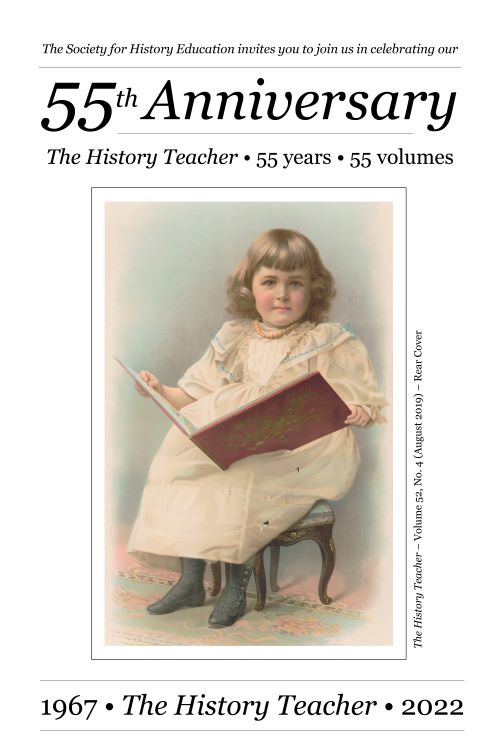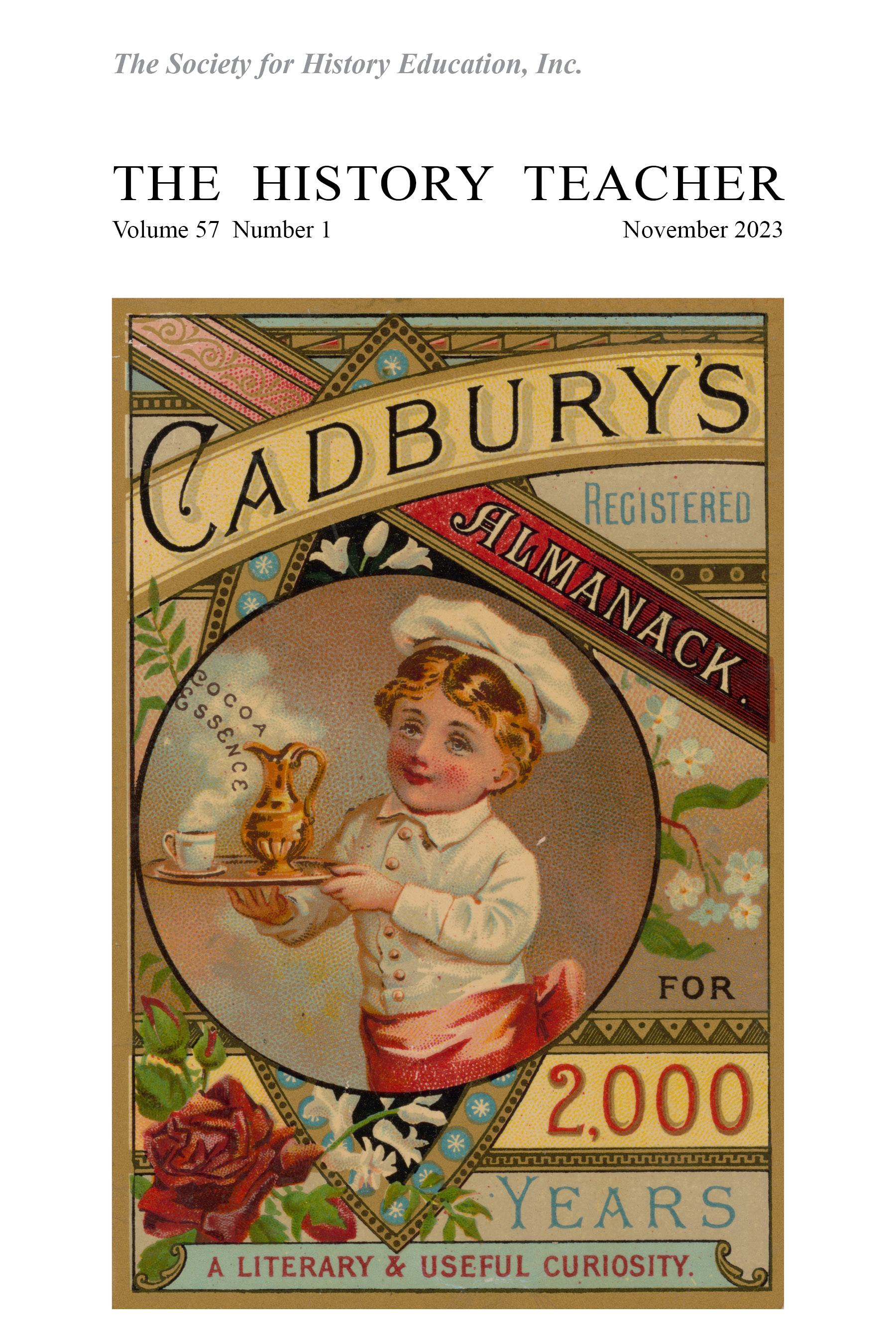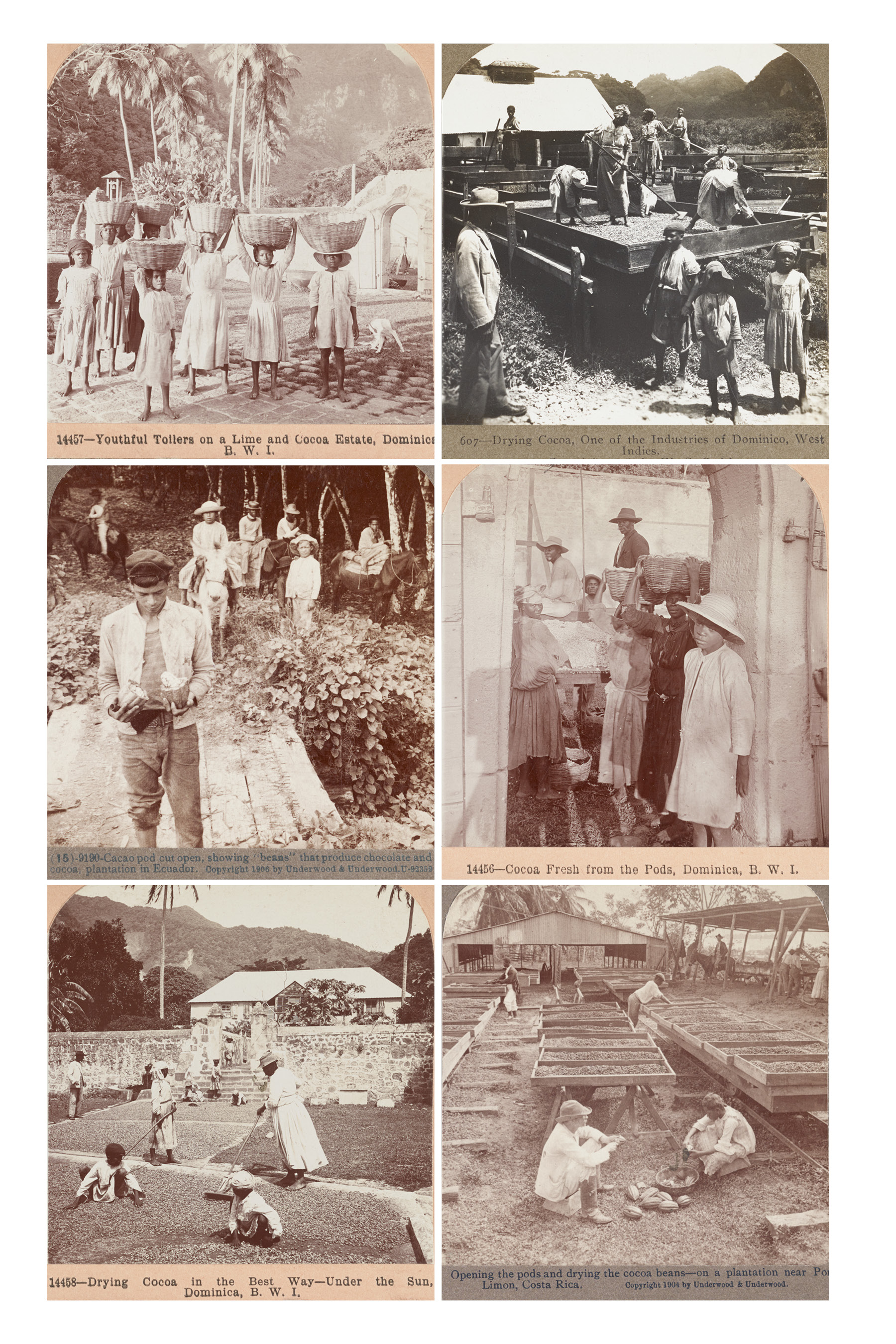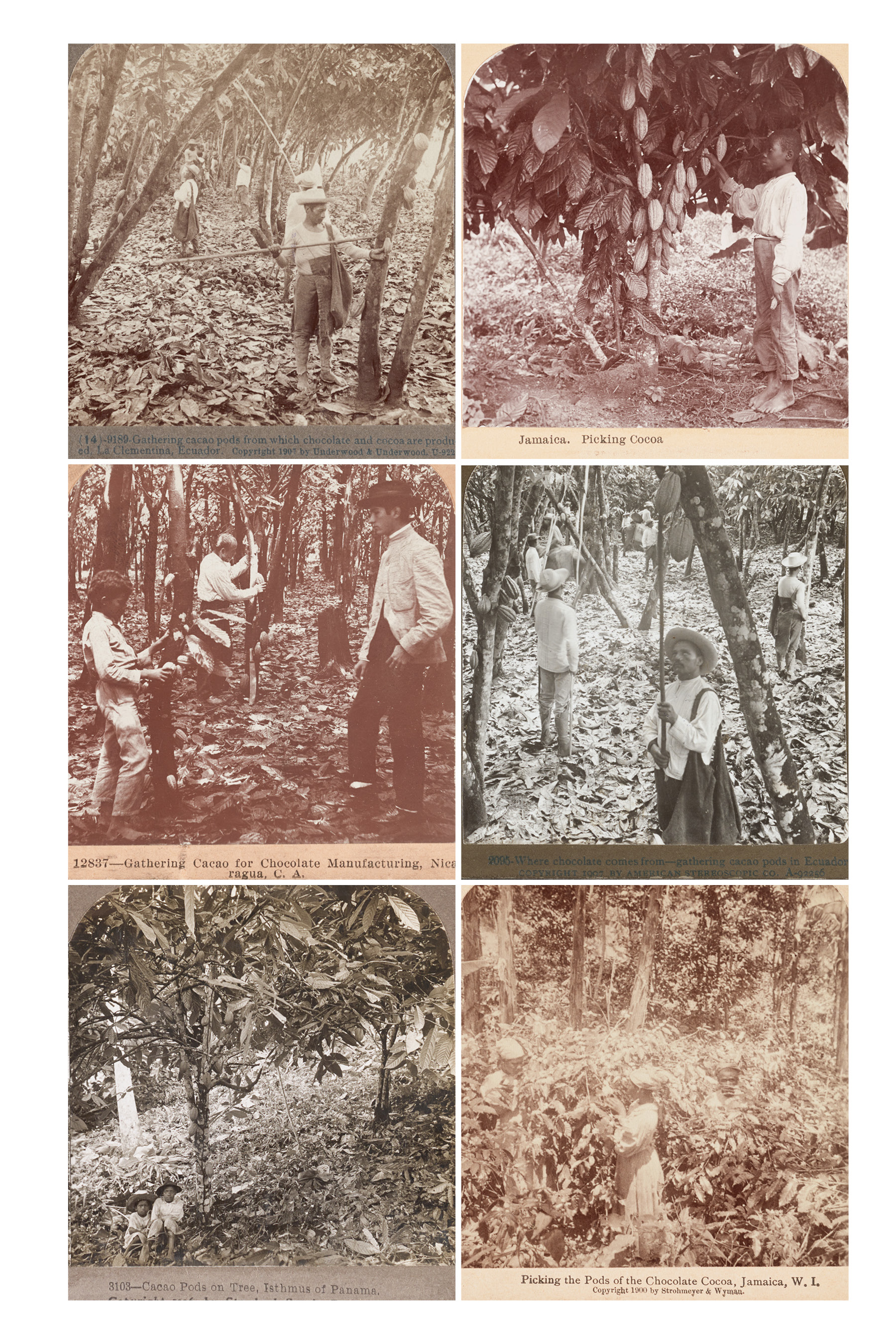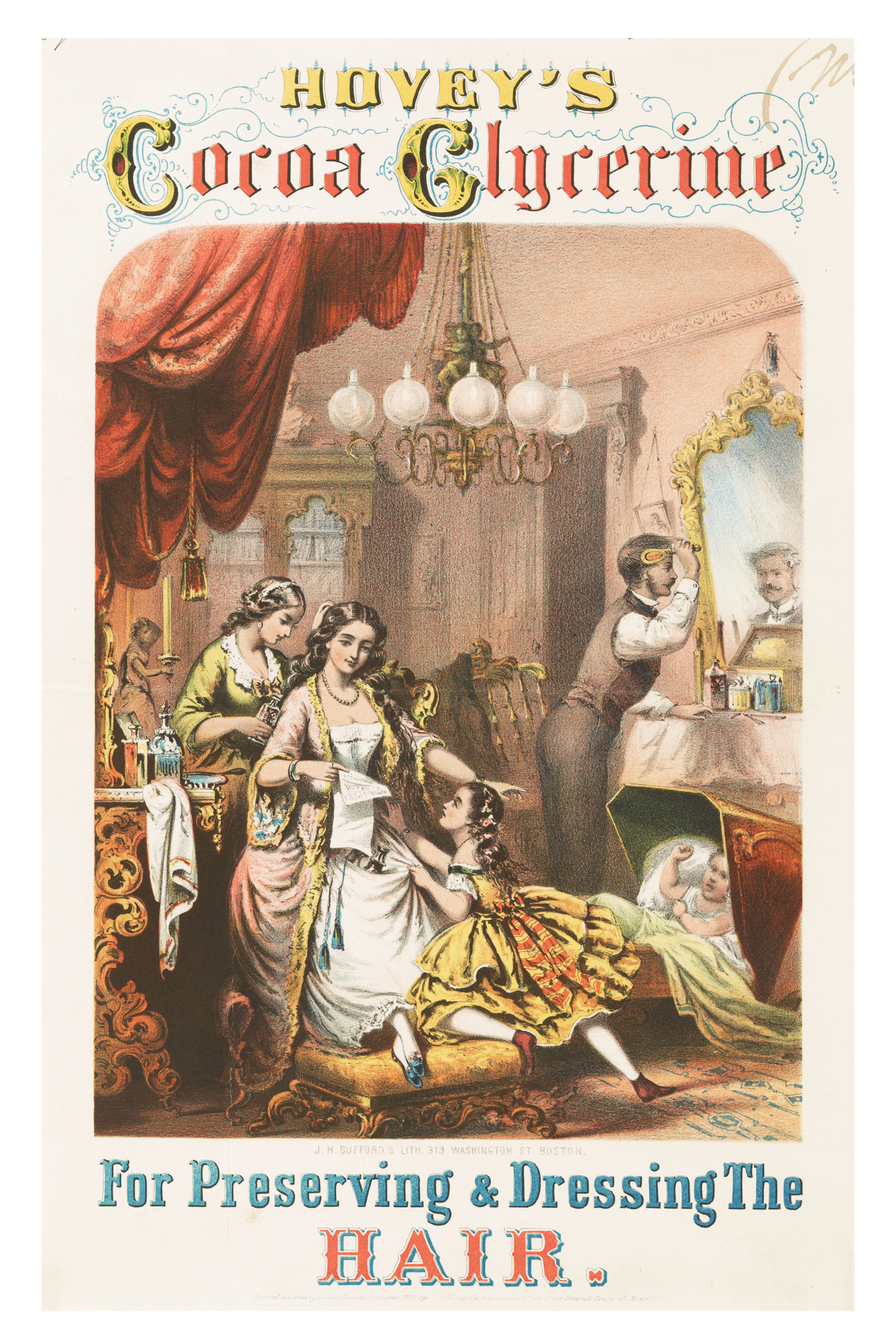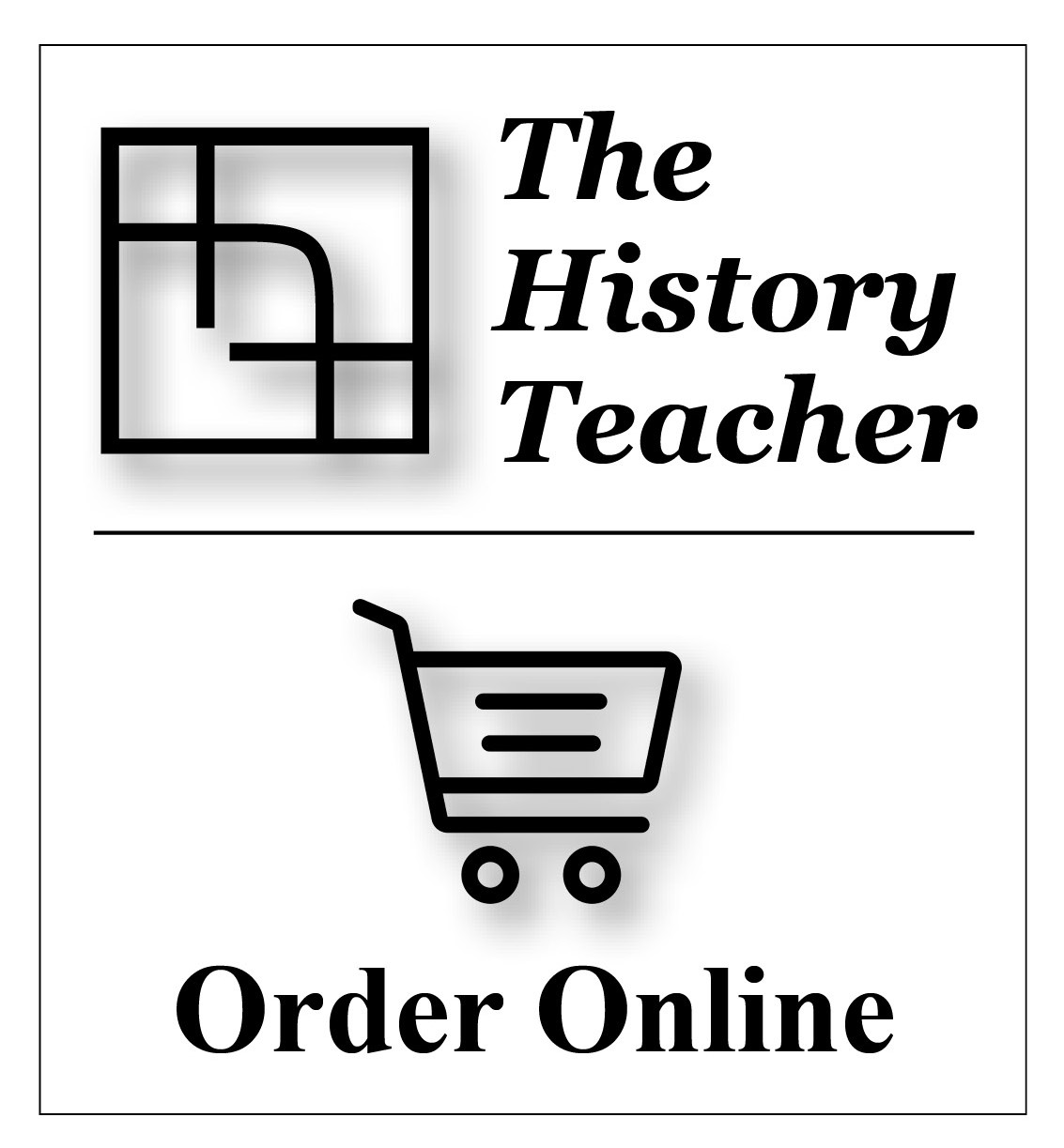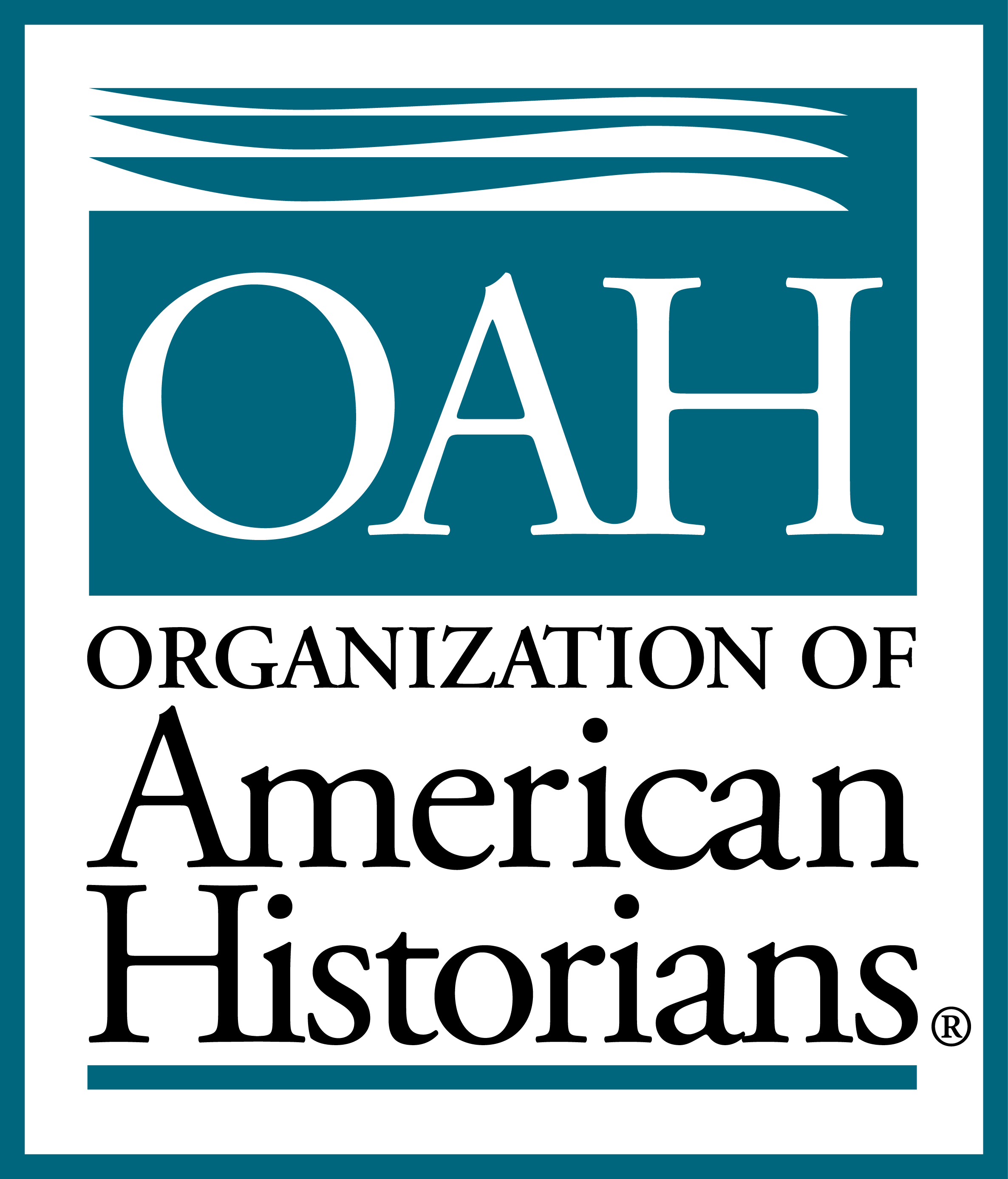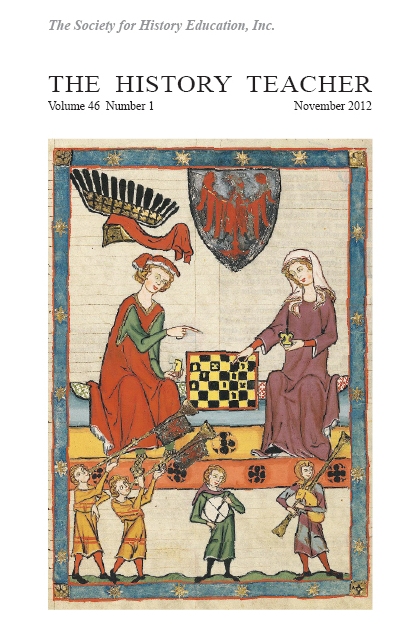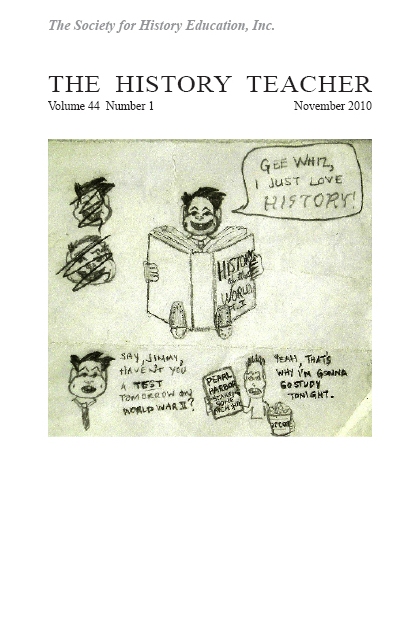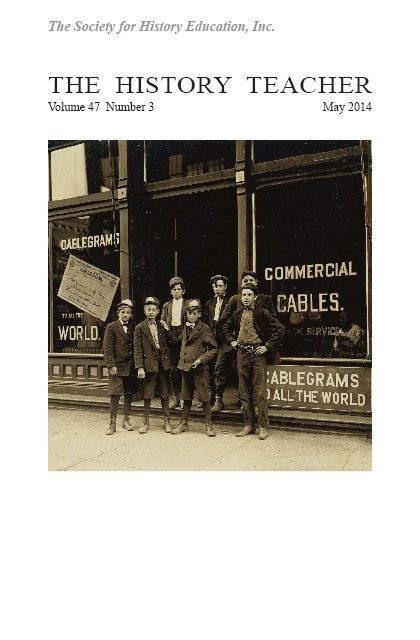The History Teacher
Volume 57, No. 1
November 2023
Front Matter | Back Matter
THE CRAFT OF TEACHING
Slices of World History
Whither the Pineapple? World History on Students' Plates
by Mairi Cowan and Christoph Richter
(pp. 9-31)
The History of Chocolate: From Footnote to Center Stage
by Patricia Juárez-Dappe
(pp. 33-59)
The World in A Year: Exploring Contingency, Context, and the
Politics of History in a Reimagined Global History Class
by Caitlin C. Monroe
(pp. 61-86)
SPECIAL FEATURE
NATIONAL HISTORY DAY 2023 PRIZE ESSAYS
Introduction
by Jane Dabel, The History Teacher
(pp. 87-88)
Ruth Bader Ginsburg on the Frontier of Gender Roles in America
by Laura Civillico, Senior Division
(pp. 89-101)
A "Social Frontier": Boy Scouts, Progressive Education, and
the Turner Thesis
by Henry Jones, Junior Division
(pp. 103-122)
REVIEWS
Full Reviews Section
(pp. 123-138)
Brooks, Daphne A. Liner Notes for the Revolution: The Intellectual Life of Black Feminist Sound
by Ruth Feldstein
Diallo, Bakary and Lamine Senghor. White War, Black Soldiers: Two African Accounts of World War I
by Joe Lunn
Fairclough, Adam. Bulldozed and Betrayed: Louisiana and the Stolen Elections of 1876
by Marius M. Carriere, Jr.
Haydu, Jeffrey. Upsetting Food: Three Eras of Food Protest in the United States
by Jennifer Jensen Wallach
Hill Edwards, Justene. Unfree Markets: The Slaves' Economy and the Rise of Capitalism in South Carolina
by John Majewski
Howell, William G. The American Presidency: An Institutional Approach to Executive Politics
by John Robert Greene
Huyck, Heather A. Doing Women's History in Public: A Handbook for Interpretation at Museums and Historic Sites
by Carla Gerona
Marcus, Alan I. Land of Milk and Money: The Creation of the Southern Dairy Industry
by Peter A. Coclanis
Minkin, Shana. Imperial Bodies: Empire and Death in Alexandria, Egypt
by Robert L. Tignor
Robinson, Francis. The Muslim World in Modern South Asia: Power, Authority, Knowledge
by Michael O’Sullivan
IN EVERY ISSUE
7 Contributors to The History Teacher
60 The History of The History Teacher
141 Questionnaire for Potential Reviewers
142 Membership/Subscription Information
144 Submission Guidelines for The History Teacher
ADVERTISERS IN THIS ISSUE
32 Society for History Education: The History Teacher
102 Society for History Education: The Richard & Louise Wilde Award
ARCHIVE EXHIBIT
Cacao, Cocoa, and Chocolate in the Early 1900s:
The Human Face of a Global Industry
Cover 2
Dominica: Youthful Toilers on a Lime and Cocoa Estate, Dominica, B. W. I., ca. 1903.
https://www.loc.gov/item/2003690324/.
Dominica: Drying Cocoa, One of the Industries of Dominico [sic], West Indies, ca. 1906.
https://www.loc.gov/item/2003680282/.
Ecuador: Cacao Pod Cut Open, Showing "Beans" that Produce Chocolate and Cocoa, Plantation in Ecuador, ca. 1906.
https://www.loc.gov/item/2019635794/.
Dominica: Cocoa Fresh from the Pods, Dominica, B. W. I., ca. 1903.
https://www.loc.gov/item/2019635780/.
Dominica: Drying Cocoa in the Best Way—Under the Sun, Dominica, B. W. I., ca. 1903.
https://www.loc.gov/item/2019635779/.
Costa Rica: Opening the Pods and Drying the Cocoa Beans—On a Plantation near Port Limon, Costa Rica, ca. 1904.
https://www.loc.gov/item/2019634815/.
Cover 3
Ecuador: Gathering Cacao Pods from which Chocolate and Cocoa are Produced, La Clementina, Ecuador, ca. 1907.
https://www.loc.gov/item/2019635793/.
Jamaica: Jamaica. Picking Cocoa, ca. 1860-1910.
https://www.loc.gov/item/2020684729/.
Nicaragua: Gathering Cacao for Chocolate Manufacturing, Nicaragua, C. A., ca. 1902.
https://www.loc.gov/item/89715954/.
Ecuador: Where Chocolate Comes From—Gathering Cacao Pods in Ecuador, ca. 1907.
https://www.loc.gov/item/90706164/.
Panama: Cacao Pods on Tree, Isthmus of Panama, ca. 1906.
https://www.loc.gov/item/2021639687/.
Jamaica: Picking the Pods of the Chocolate Cocoa, Jamaica, W. I., ca. 1900.
https://www.loc.gov/item/2020684710/.
Page 8
Ecuador: Raking Over 14 Tons of Cacao Beans on the "Driers" at La Clementina Plantation, Ecuador, ca. 1907.
https://www.loc.gov/item/2019636005/.
Ecuador: Houses on Stilts Where Laborers' Families Live—Cacao Plantation, La Clementina, Ecuador, ca. 1907.
https://www.loc.gov/item/2002699647/.
CONTRIBUTORS
Laura Civillico is a sophomore in the Humanities Magnet Program at Poolesville High School in Poolesville, Maryland. Her paper, "Ruth Bader Ginsburg on the Frontier of Gender Roles in America," won first place at the 2023 National History Day competition in the Senior Paper division. Laura is interested in government and the law, and she avidly follows U.S. politics. She has won several awards for her poetry, including a Scholastic Gold Key. Laura enjoys competitive public speaking, performing in school plays, and directing short films.
Mairi Cowan holds a Ph.D. from the Centre for Medieval Studies, University of Toronto, and is currently an Associate Professor, Teaching Stream, in the Department of Historical Studies and the Institute for the Study of University Pedagogy at the University of Toronto Mississauga. She researches medieval Europe, early colonial North America, and the teaching and learning of history.
Henry James is currently a freshman at the Liberal Arts and Science Academy in Austin, Texas, where he lives with three cats and a dog named Benny. He loves History, Law, and English and hopes to continue these subjects in college. He is a junior member of the Debate Club, Art Club, and Banned Book Club. He loves to write about interesting topics and draw creepy creatures and characters.
Patricia Juárez-Dappe (Ph.D., University of California, Los Angeles) is a Professor of History at California State University, Northridge. Her research focuses on Argentine history and the history of commodities. Her first book, When Sugar Ruled, examines the social and economic impact of sugar production in Tucumán, Argentina. Her upcoming book, Partners in Crime, analyzes the ideological foundations of the last military dictatorship in Argentina. She is currently working on a project that explores teaching world history through the lens of cacao and chocolate.
Caitlin Monroe is an Assistant Professor of History and Africana Studies at the University of Northern Colorado. She earned her Ph.D. from Northwestern University, where she first taught the "World in a Year" course featured in this issue of The History Teacher. She has teaching and research interests in history education, global gender and sexuality history, Ugandan intellectual history, and histories of storytelling.
Christoph Richter holds a Ph.D. in Marine Science from the University of Otago in New Zealand. He is an Associate Professor, Teaching Stream, in the Department of Biology and the Institute for the Study of University Pedagogy at the University of Toronto Mississauga. His research focuses on sperm whales, urban ecology, and the impacts of co-teaching and students’ understandings of academic integrity.
|
